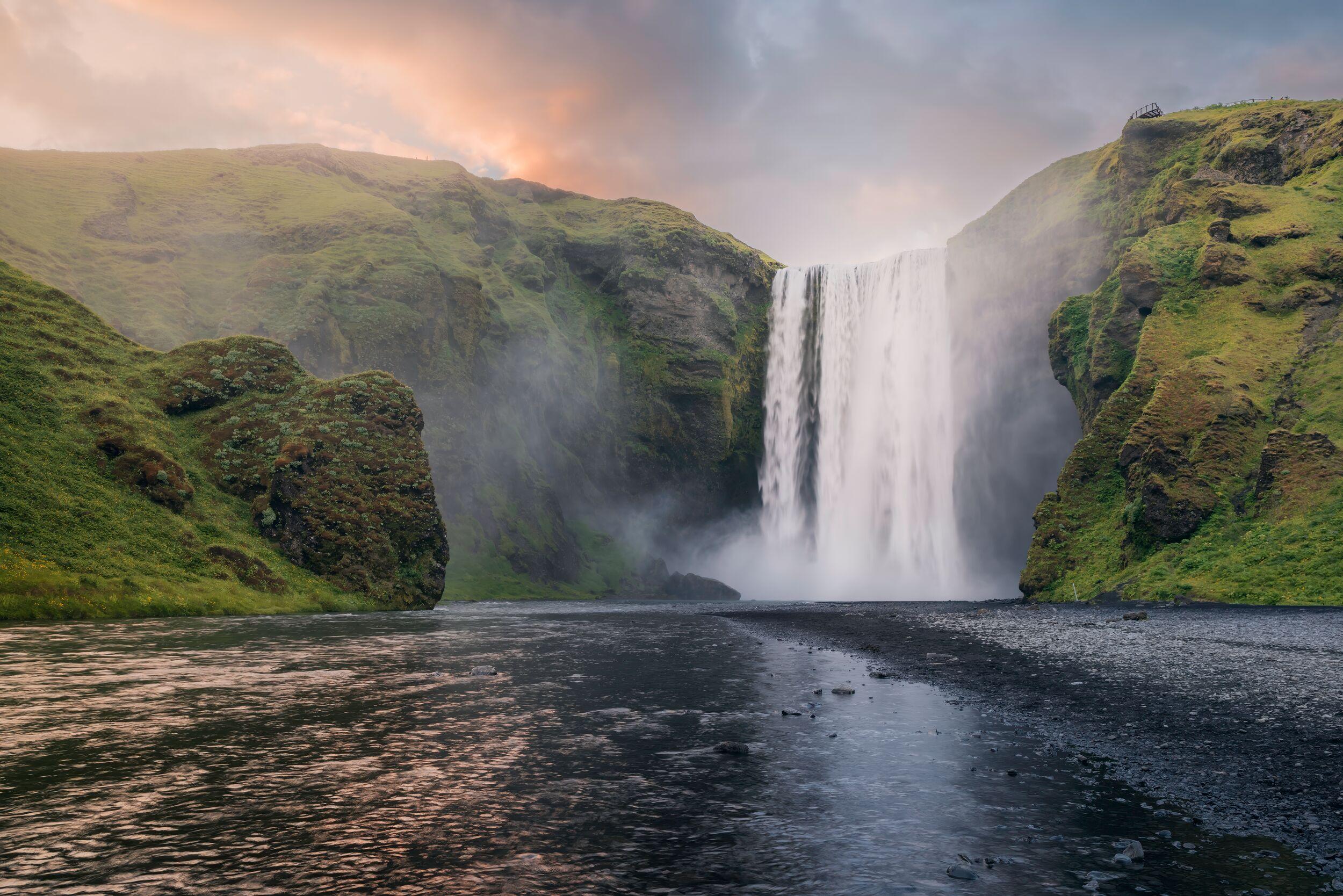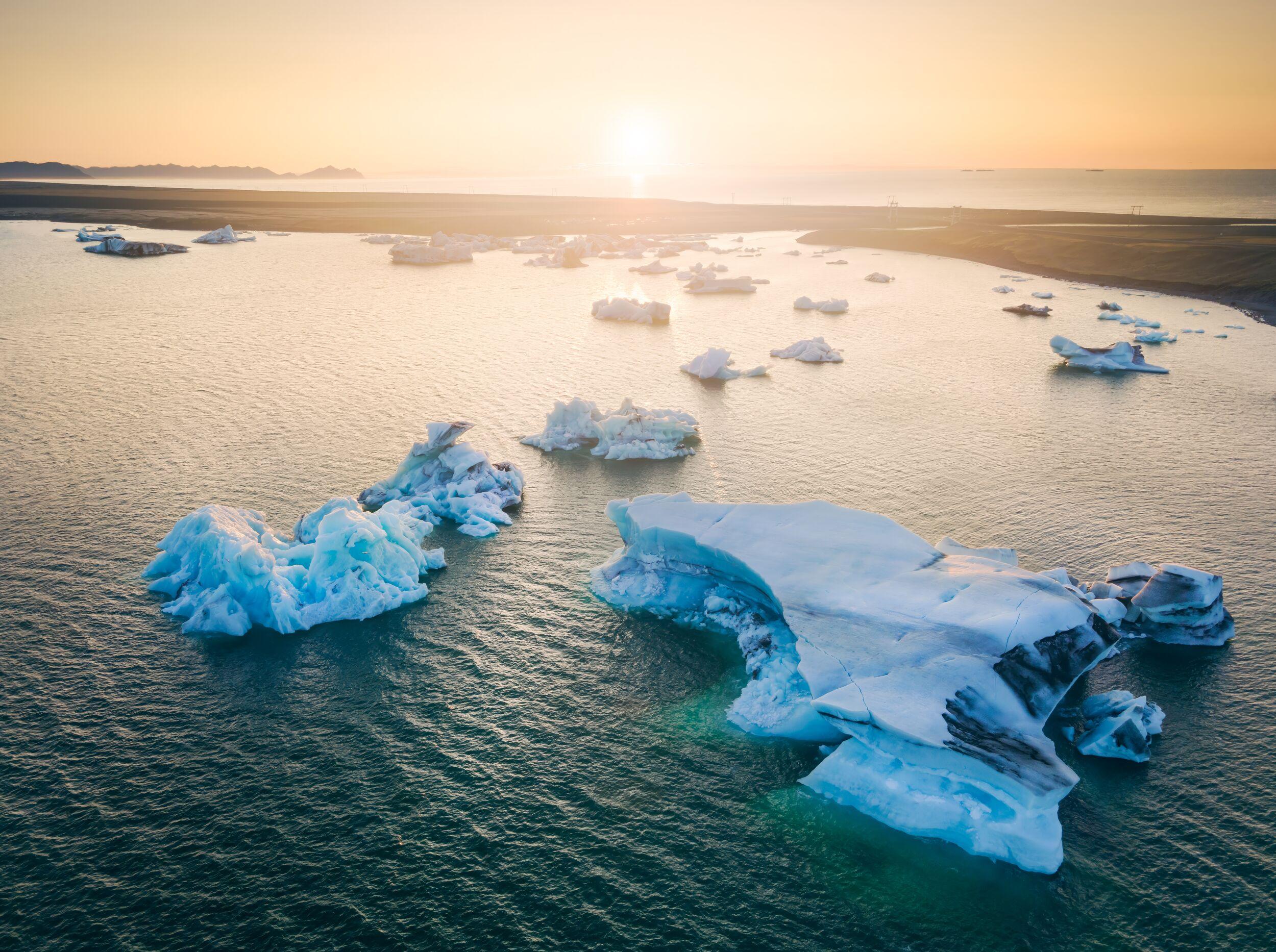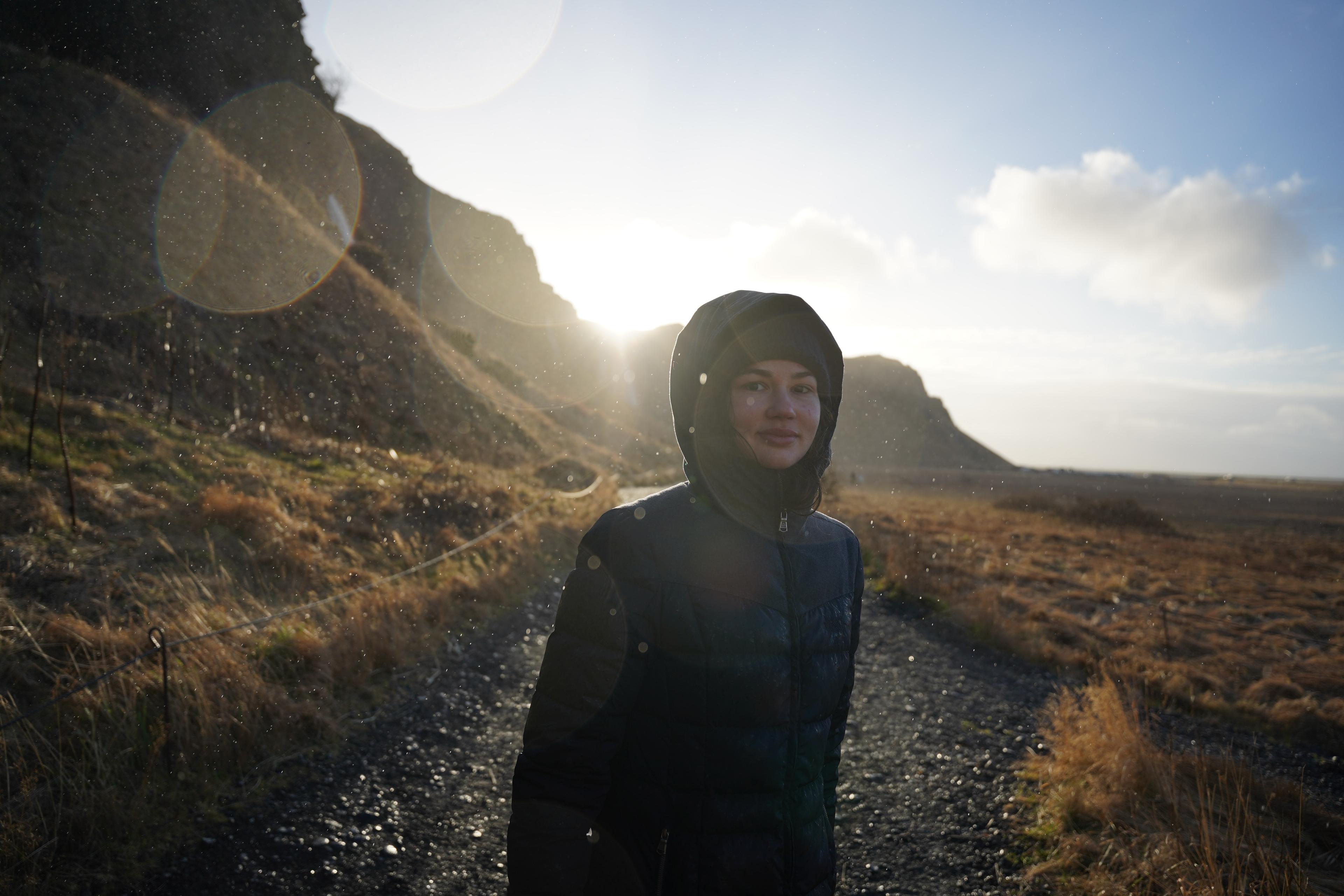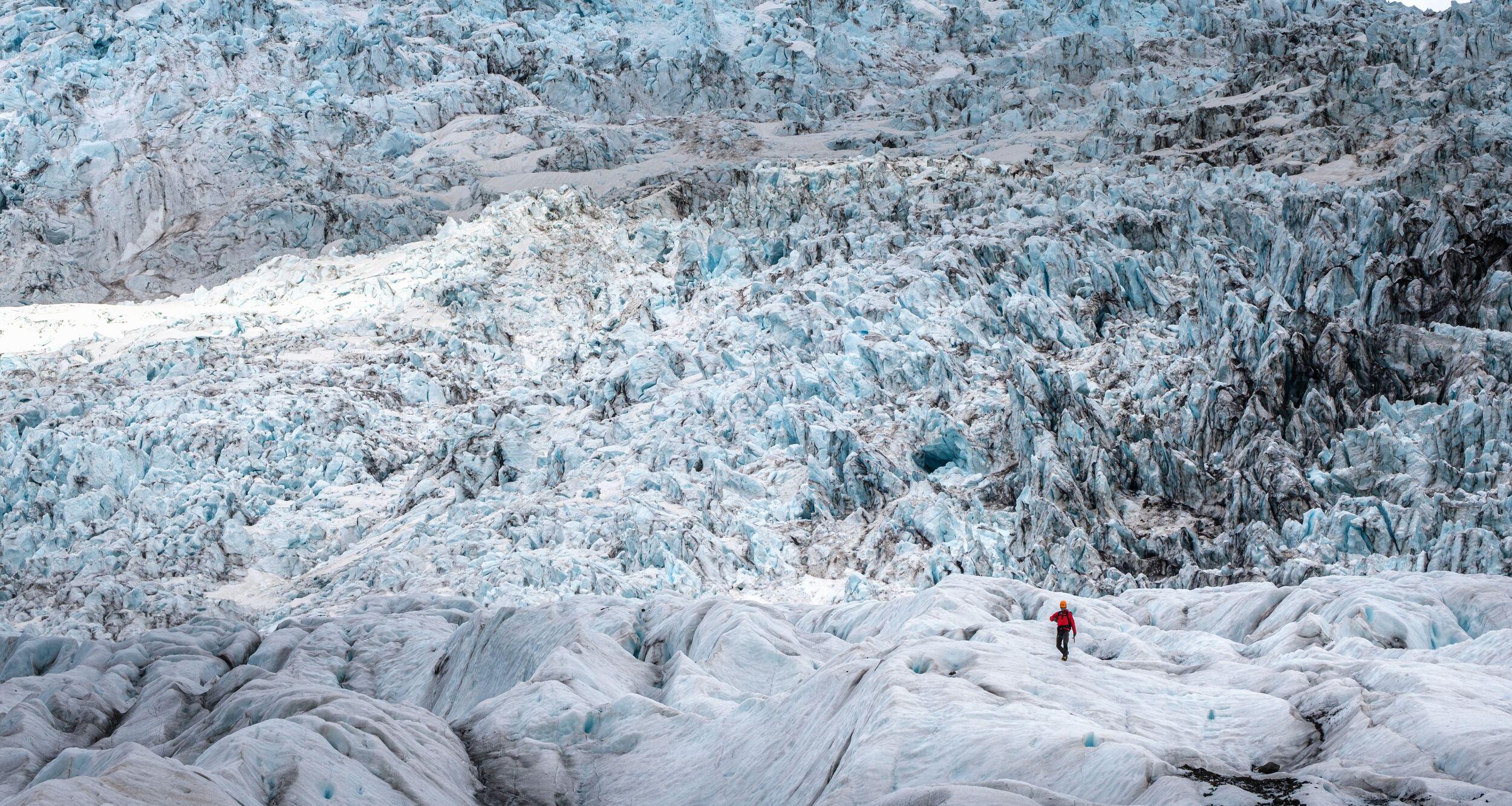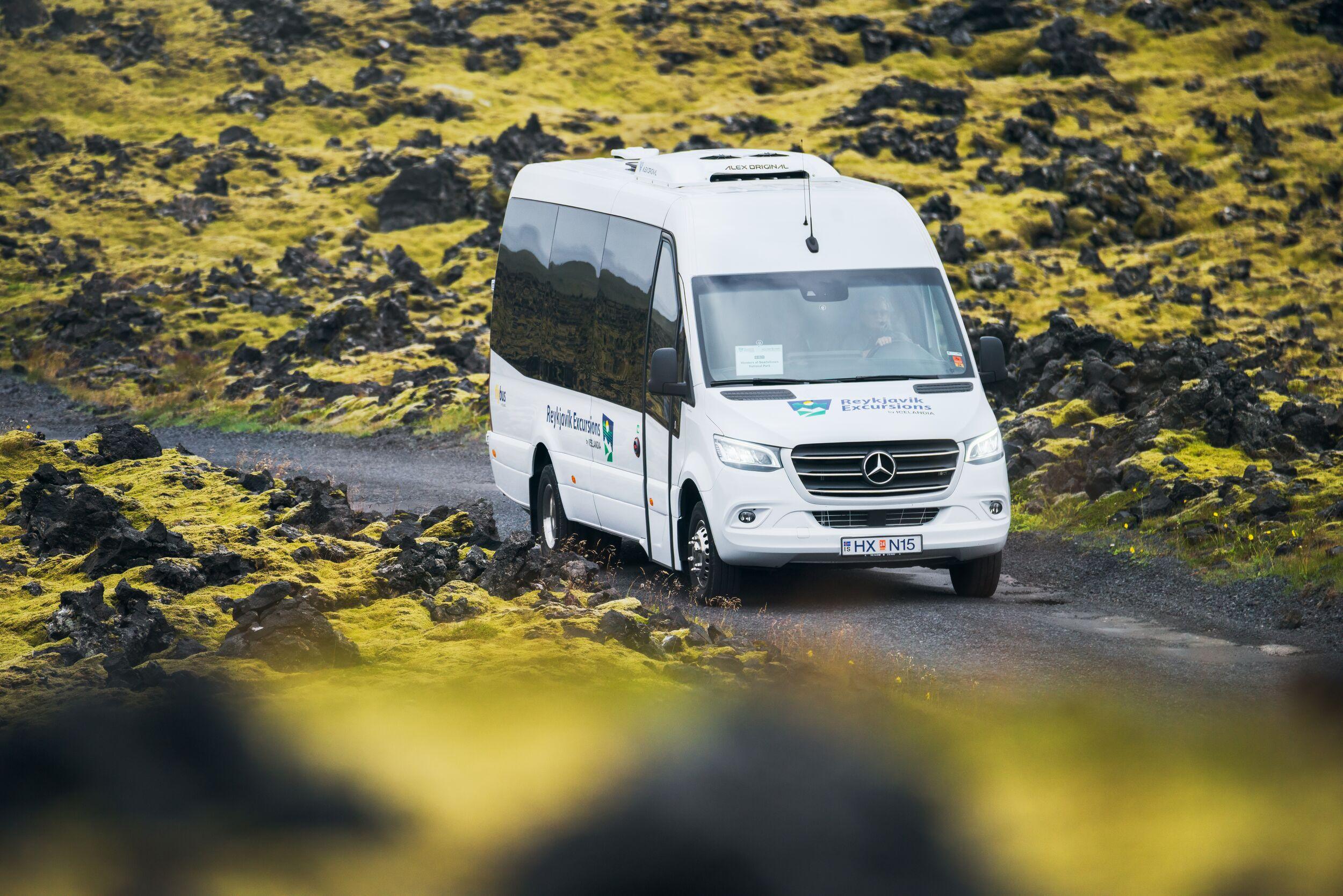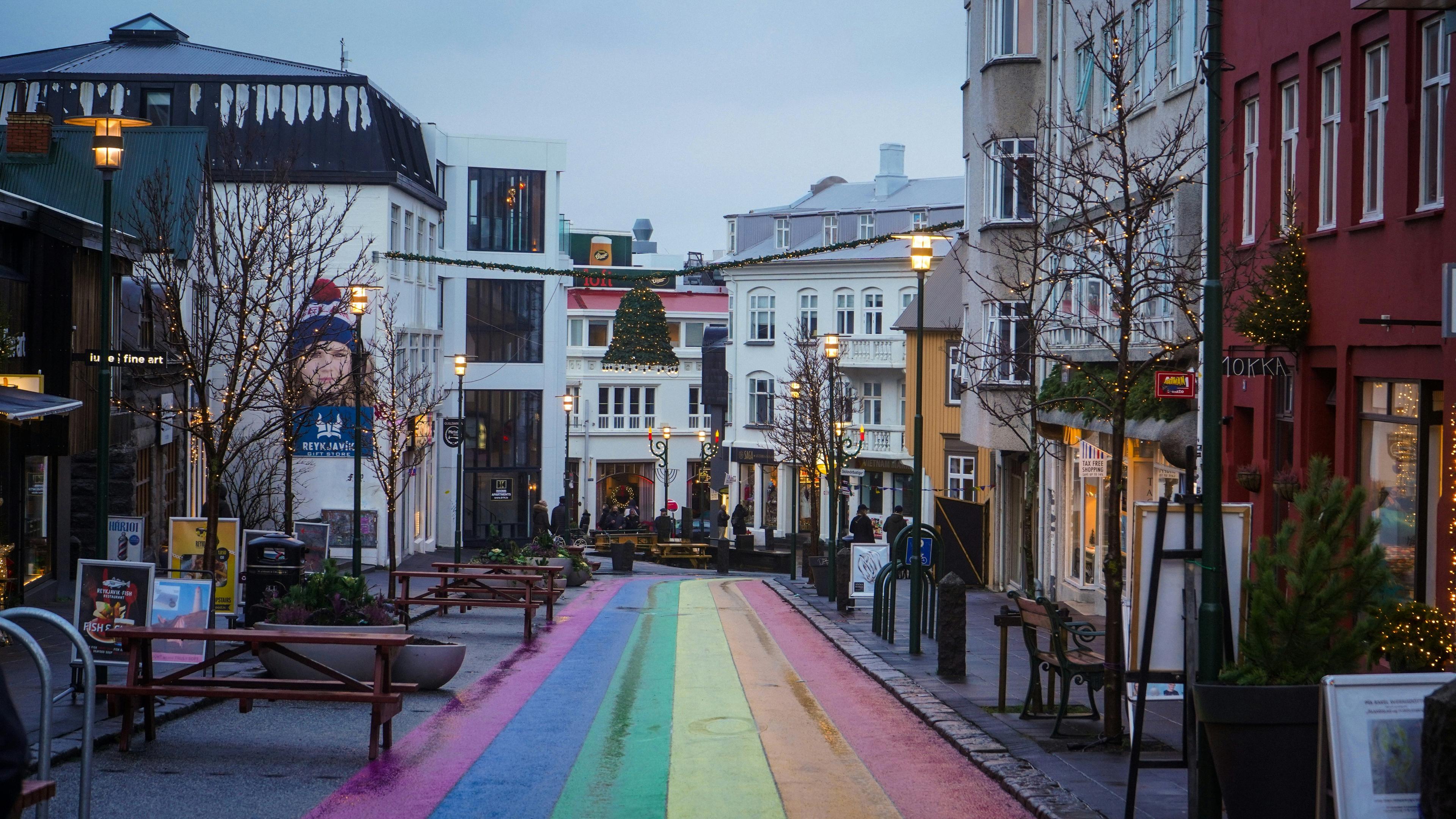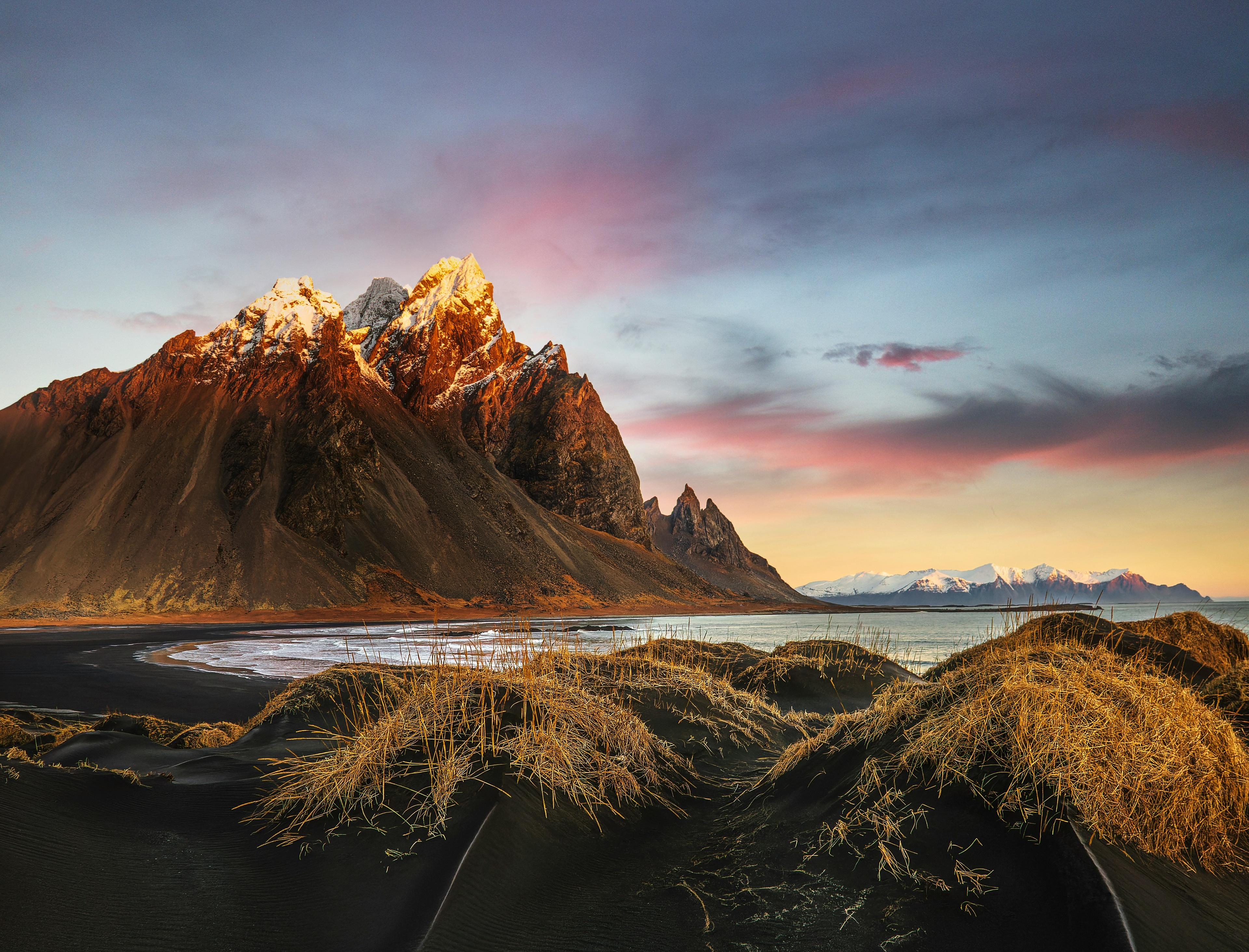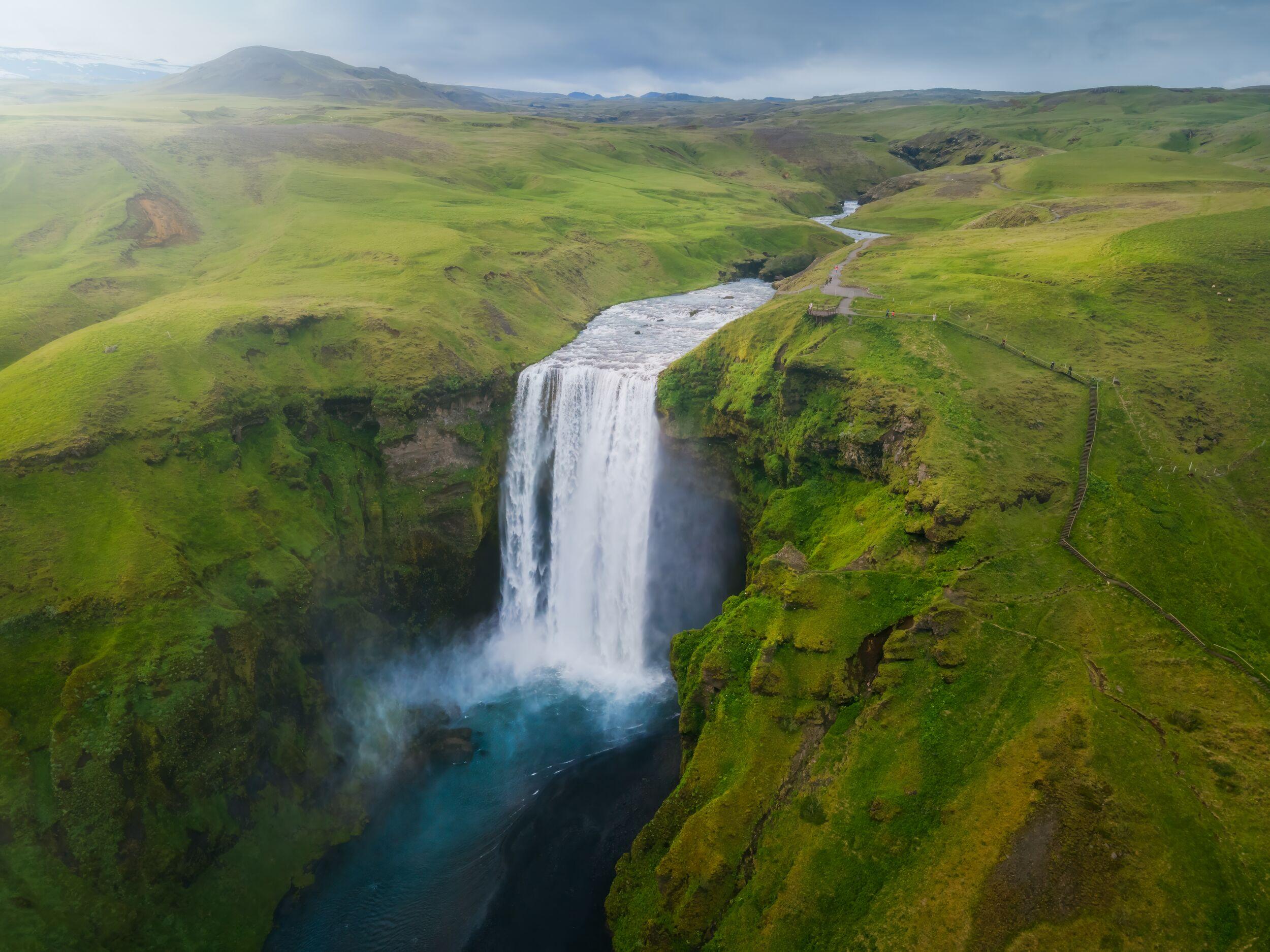The Best Months to Visit Iceland
Table of Contents
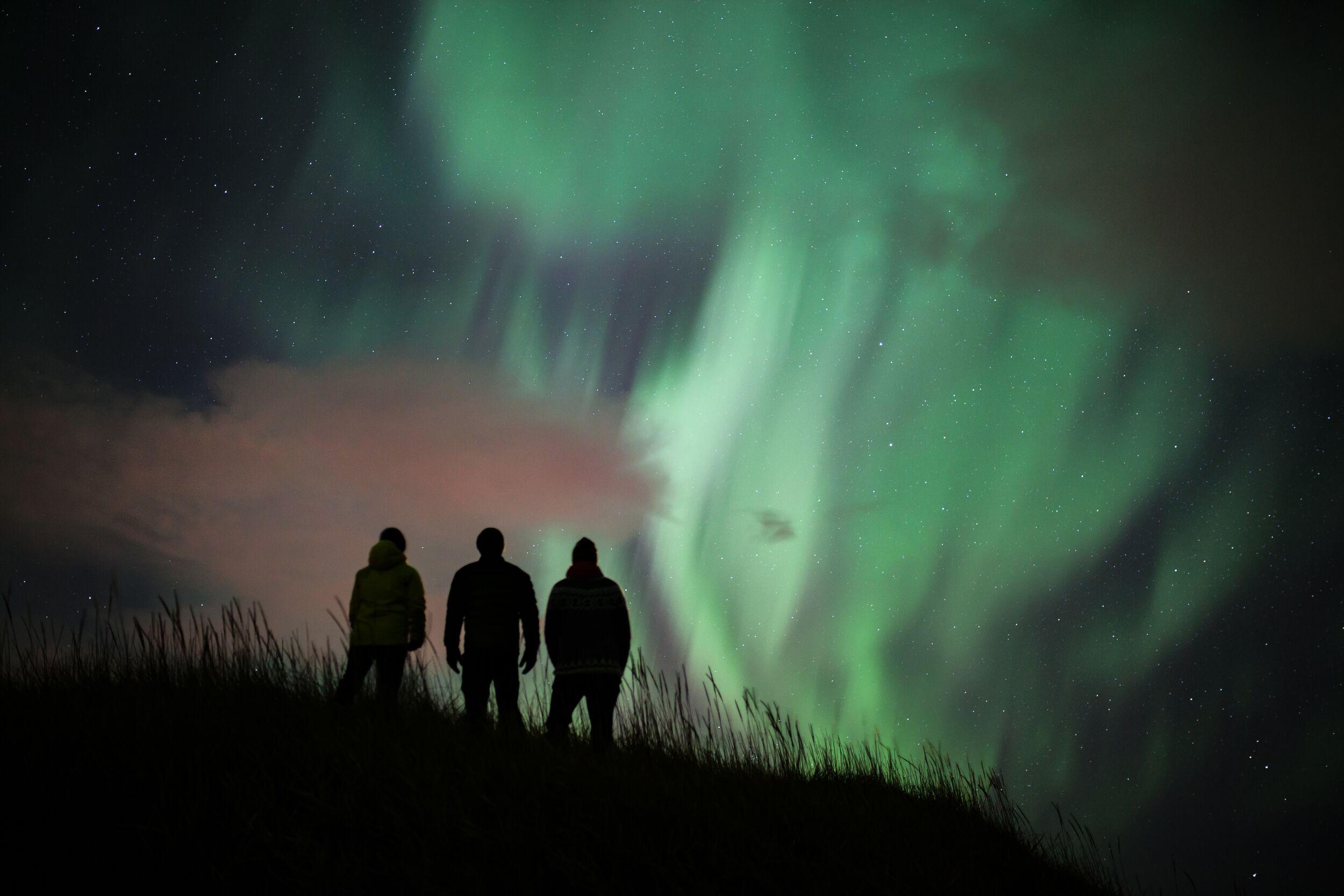
The Winter Wonders: December to February
These months are the heart of Iceland's winter and offer some of the most profound experiences for intrepid travellers. December and January are the darkest months, with the sun barely above the horizon, and Reykjavik enjoys just around four hours of daylight. This prolonged darkness, however, offers the perfect backdrop for the magnificent Northern Lights, a sight that will leave you in awe.
Despite the cold and unpredictable winter weather, there's plenty to do. Embrace the Icelandic outdoor bathing culture at the Blue Lagoon, Sky Lagoon, Hvammsvík, or any of the heated swimming pools and natural, geothermal pools. For an extra touch of magic, bathing while snow falls above you is a uniquely Icelandic experience.
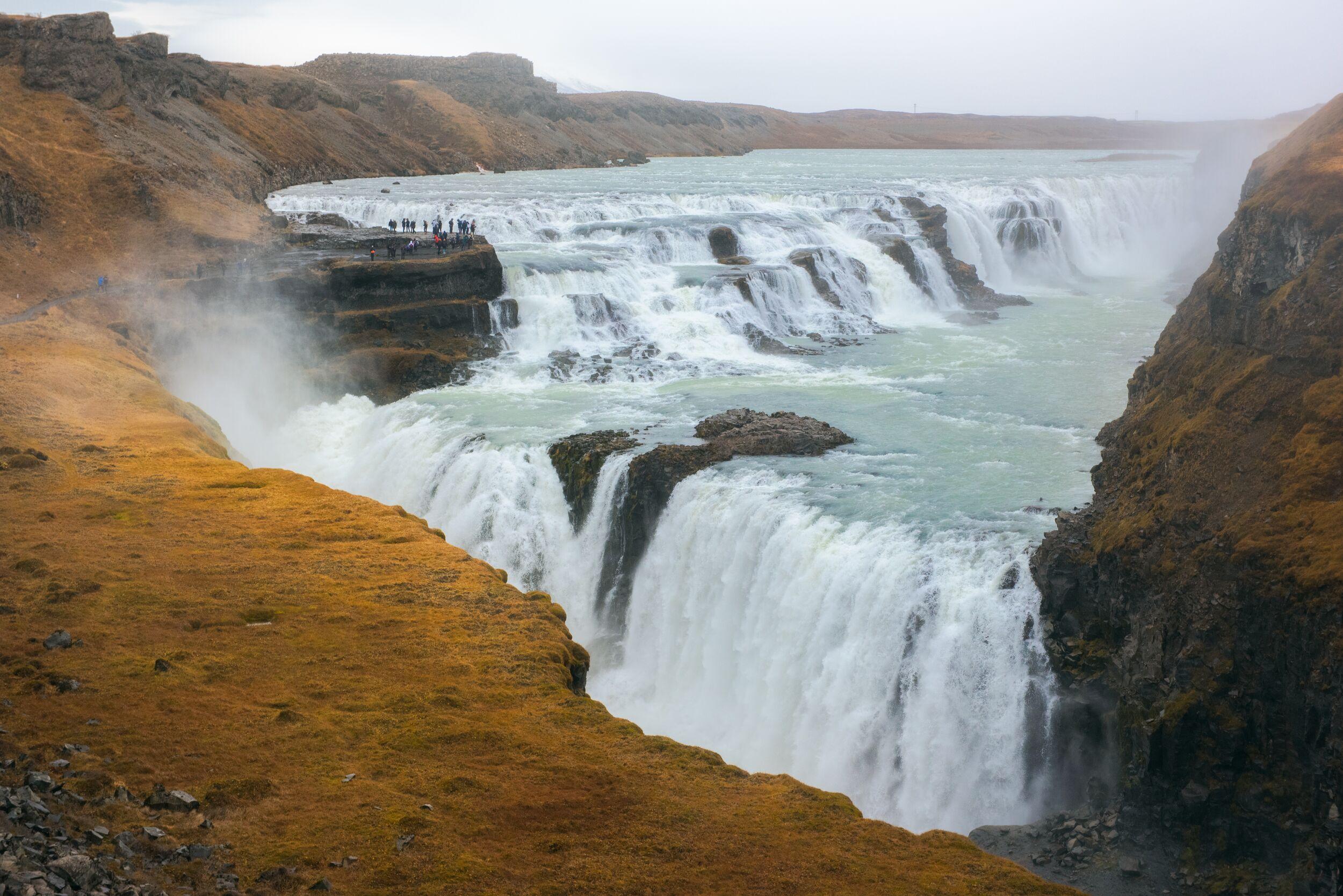
The Golden Months: February to April
February to April in Iceland is characterised by long shadows and a beautiful golden glow that suffuses the landscape. As the sun never reaches its zenith and hangs above the horizon, photographers are drawn to the unique light that this period offers. Additionally, many traditional Icelandic festivities like Bollundagur, Sprengidagur, and Öskudagur take place in February, adding cultural depth to your journey.
Despite the occasional snow blizzard, these months are an ideal time to explore Iceland's natural ice caves. The glacial ice hasn't begun melting, and a tour of these caves offers a surreal experience.
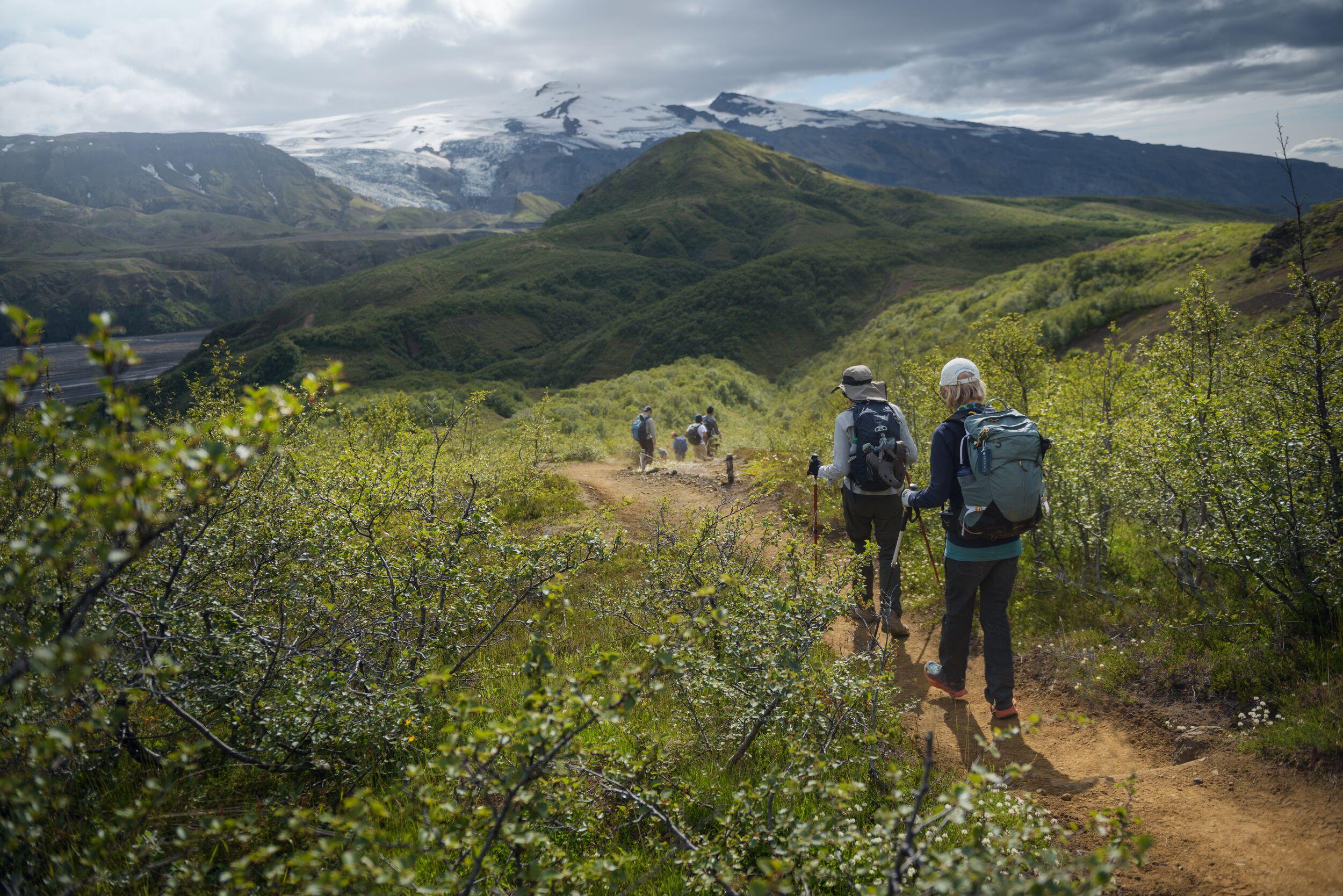
The Summer Splendour: May to August
Summer sweeps over Iceland from May through August, offering long daylight hours stretching into the night. In June, the midnight sun phenomenon provides 24 hours of daylight. This extended daylight offers great flexibility for your sightseeing schedule.
Summer is the perfect time to hike in Iceland or even to tackle Hvannadalshnúkur, Iceland’s highest peak. With the smaller gravel roads accessible, summer is the best time for exploring the rugged highlands of Iceland. You can also indulge in other summer activities like bathing in geothermal pools and late-night walks around Reykjavik.
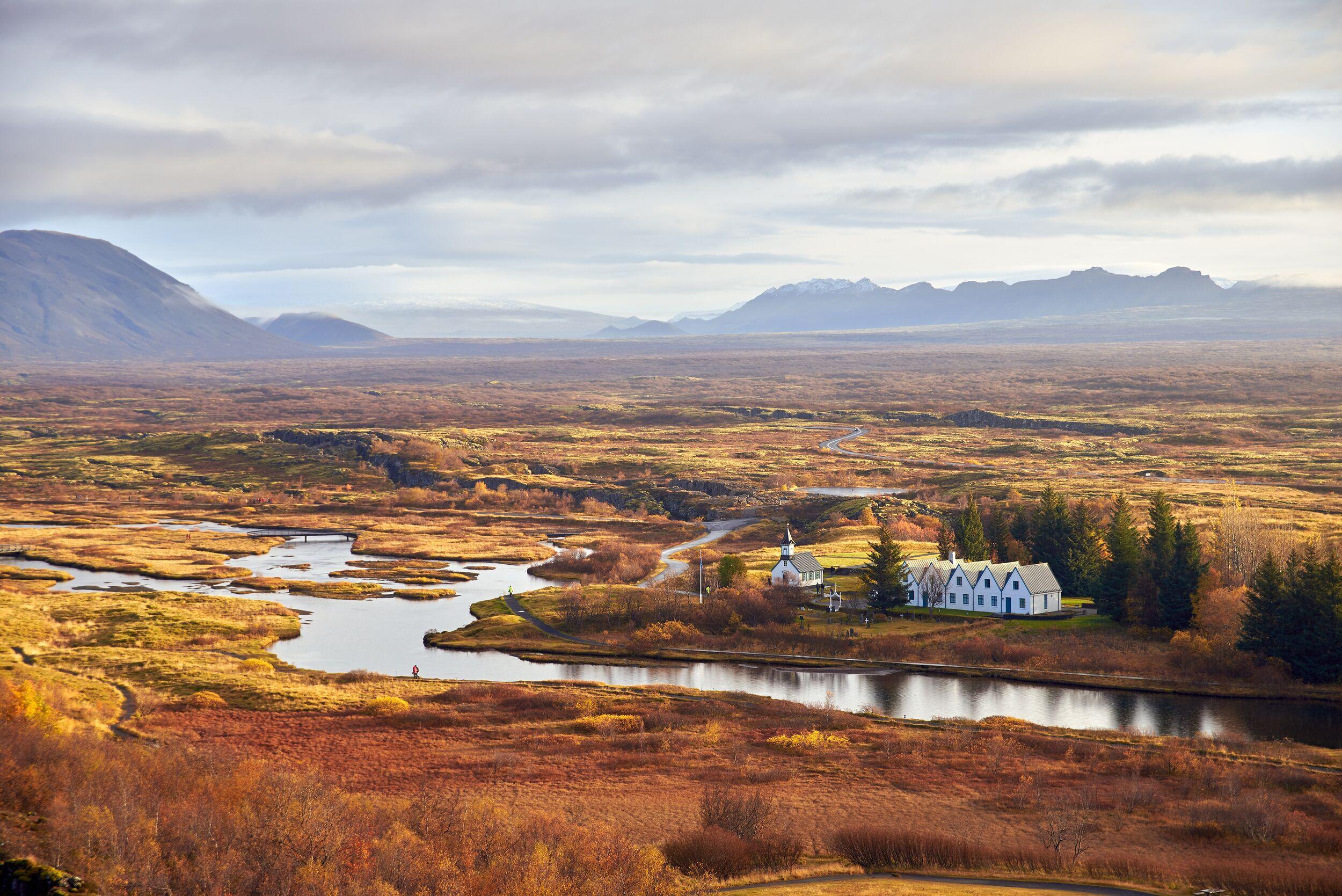
The Autumn Drama: September to November
The transition from verdant summer to icy winter occurs between September and November, adding a dramatic touch to the landscape. The daylight hours shrink, and the colors change from vibrant green to chestnut brown with patches of ice and snow. The "golden hour" extends throughout the day, providing a mesmerizing backdrop for photographers.
This period is also excellent for Northern Lights spotting as the nights grow longer. You can embark on adventurous activities like snowmobile tours or enjoy multi-day tours around the island.
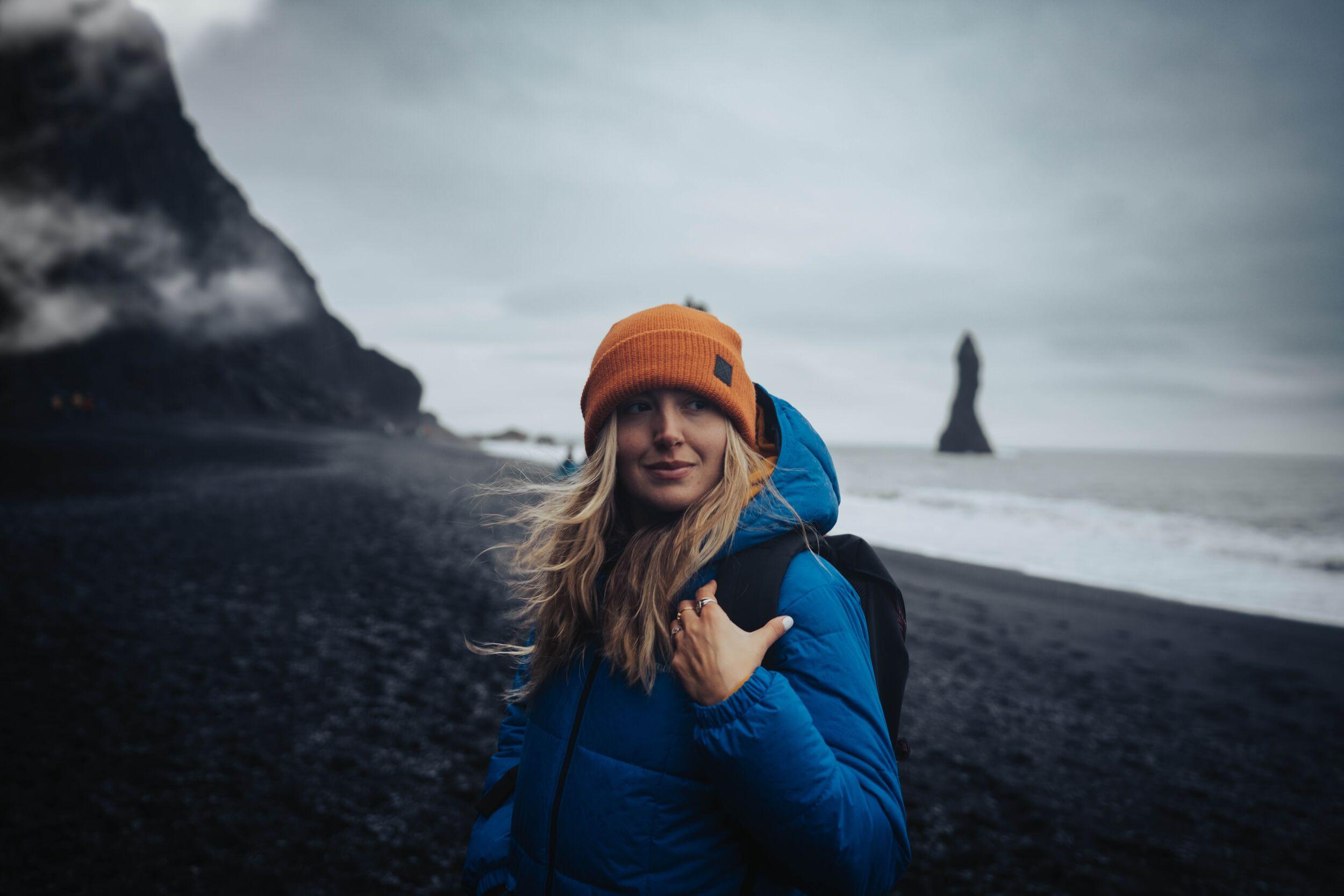
The Weather in Iceland
Iceland has a whimsical personality that's as wide-ranging as its landscapes. Sure, it might not be the go-to destination for sun worshippers, but hey, where's the fun in the predictable, right? Whether it's a gust of wind singing in your ears, or a serene snowfall painting the town white, each day in Iceland is a new adventure, a fresh story unfolding.
Take it from us, the weather here doesn't play by the rules, and that's the beauty of it! Remember, it's all about the right clothing. With the right clothing and equipment, even seemingly adverse conditions can transform into unforgettable experiences. Ensuring you pack suitable clothing that can handle a range of weather conditions will go a long way in ensuring a comfortable trip.
The Mesmerizing Transformation: Iceland's Landscapes Through the Seasons
Embark on a journey through Iceland's ever-changing weather as it dances through the months, each with its unique rhythm and charm. Picture this: the invigorating chill of January, crisp and clear, under a sky aglow with the legendary Northern Lights.
February offers an enticing gamble, teasing you with sunshine, long shadows, snow, and sleet, often in a single day!
As March steps in, days grow longer, gifting you longer days for exploration, spectacular sunsets and sunrises, while the snowy landscapes and blue ice caves are at their most enchanting.
Welcome April, the harbinger of spring, when the land thaws and a golden brown takes over. Make way for May, the gateway to summer, with the green meadows, foals and calves frolicking about under skies that shine for up to 20-23 hours!
The legendary midnight sun makes its grand appearance in June, basking the land in a perpetual glow and adding magic to every adventure.
July, the warmest month, invites you to roam around under skies that rarely see rain, while in August, the eastern part of the island bathes in exceptional warmth, offering you a chance to explore the highlands and perhaps catch an early glimpse of the Northern Lights.
As autumn sets in, September gifts you vivid fall colours and the soothing warmth of the Gulf Stream, making every photograph a masterpiece.
October brings back the chill, gracing the land with a burst of autumnal colours, and making every cozy cafe a delightful haven.
November, with its capricious weather, challenges you to pack for all possibilities, while the ever-shortening daylight adds an element of intrigue to your adventures.
December, the darkest month, welcomes you into a winter wonderland, perfect for exploring ice caves and chasing the Northern Lights in the mere 4-5 hours of daylight.
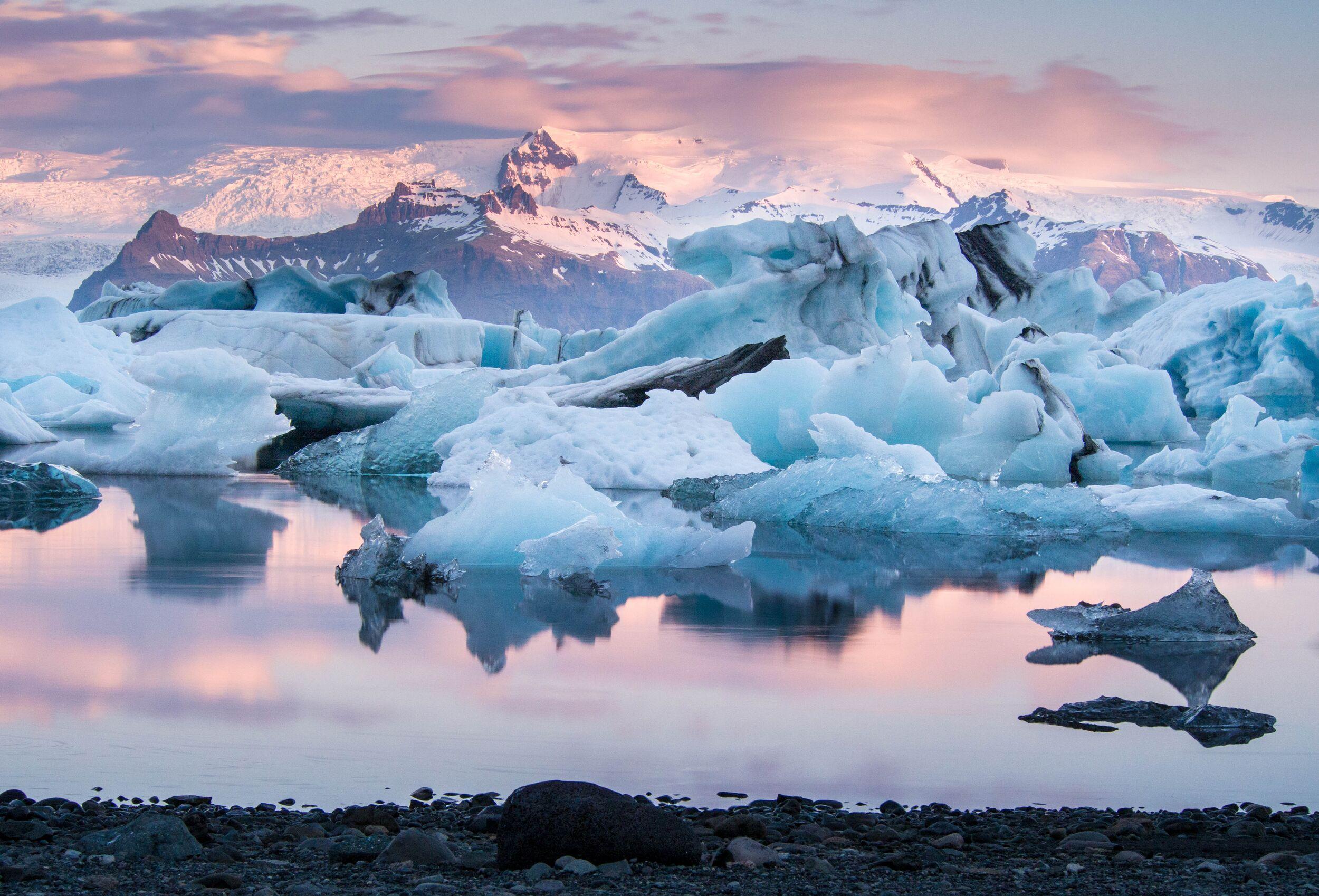
Daily Average Temperatures in Reykjavík
- January: 3.1°C / -1.8°C
- February: 3.3°C / -1.9°C
- March: 4°C / -1.3°C
- April: 6.8°C / 1.2°C
- May: 9.8°C / 3.9°C
- June: 12.7°C / 7.7°C
- July: 14.6°C / 8.8°C
- August: 13.9°C / 8.7°C
- September: 11-1°C / 5.9°C
- October: 7.5°C / 2.7°C
- November: 4.5°C / -0.2°C
- December: 3.3°C / -1.6°C
Iceland, in all its beauty, offers unique experiences throughout the year. Whether it's witnessing the mesmerizing Northern Lights in the winter, experiencing the captivating midnight sun in summer, or enjoying the dramatic changes of the landscape in autumn, the best time to visit Iceland depends largely on your preferences and interests.
To maximize your travel experiences, consider the less crowded off-peak months of May and September. If hiking and exploring the highlands are your priorities, plan for a summer visit. For the Northern Lights, winter is your best bet. Whatever the time of year, there's always something magical to experience in Iceland. Remember to plan in advance, prepare for the weather, and, most importantly, soak in all the incredible beauty this unique land has to offer.
The Best Month to Visit Iceland - All You Need to Know
The best months to see the Northern Lights in Iceland are from late September to late March, when the nights are the longest.
The best months to go to Iceland generally depend on what you want to do. For outdoor activities and good weather, the summer months (June to August) are the best. If you want to see the Northern Lights, you should go in the winter months. If we really want to define the "worst" months, it can be considered the transitional months like April and November, when the weather can be highly unpredictable. However, these months are usually the most affordable due to lower prices.
The coldest month in Iceland is generally January, with average temperatures between -3°C and +2°C.
The dark season in Iceland is during the winter months, from late November until late January. The country experiences only 4-5 hours of daylight during this period.
The wettest month in Iceland is usually October, but it can also be quite rainy in September.
The sunniest month in Iceland is typically May, when the country begins to experience long hours of daylight, culminating in the Midnight Sun period of June and July.
The cloudiest month in Iceland is usually December, due to the shortened daylight hours and winter weather conditions.
The stormiest month in Iceland is typically December. It can bring strong winds and severe winter storms, especially in the North and the Westfjords.
The windiest month in Iceland is generally December, though November and January can also be quite windy.
The snowiest month in Iceland is typically December, when the winter season truly begins, though it can continue to snow heavily throughout January and February as well.
The hottest month in Iceland is July when the average temperature ranges between 10°C and 15°C.
Relaved Articles
See all articlesRecommended tours
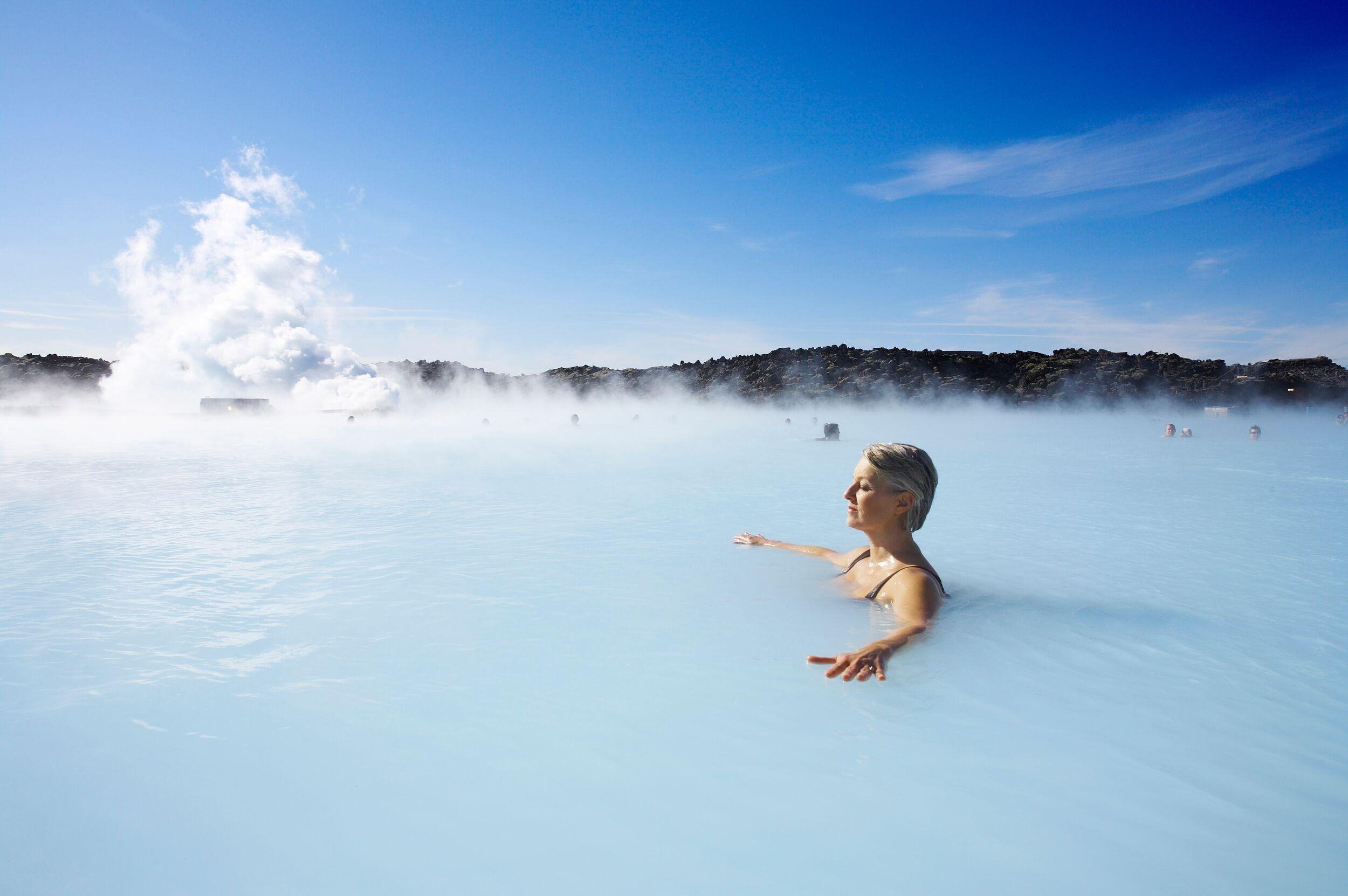
- Best seller
- Popular
Blue Lagoon & Northern Lights
Enjoy a perfect winter day in Iceland! Experience the best of Iceland with this package of two of the island’s most popular tours in one day! Soak in the milky blue healing water of the Blue Lagoon, which is one of Iceland's most famous tourist attractions and is considered by many to be a once-in-a-lifetime experience and an unmissable part of a visit to Iceland. After your return to Reykjavík, a guide will lead you on a search for the elusive northern lights! Watching the lights dance and flicker in the sky, changing shape and colour, is incredible. Prepare to be dazzled!
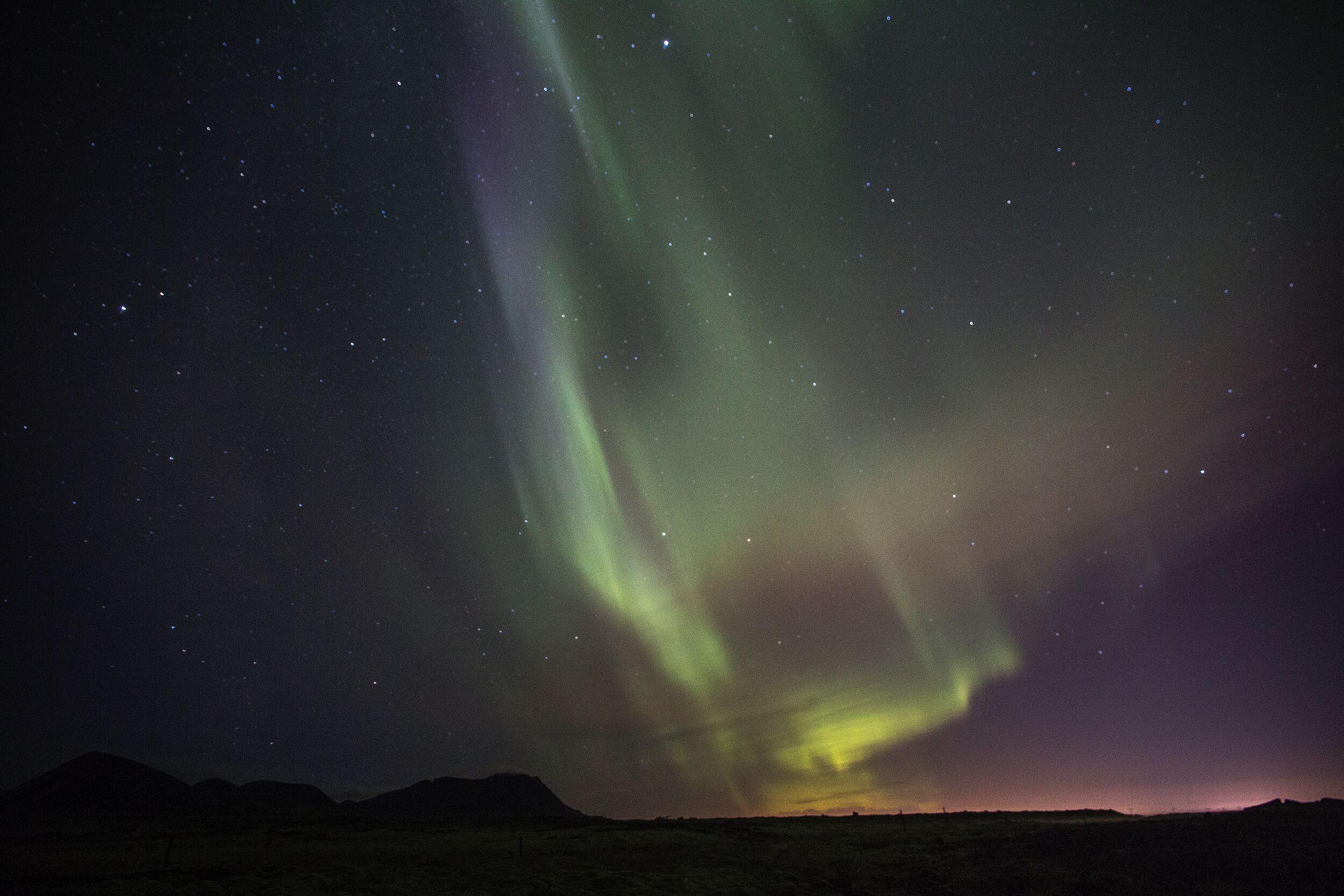
The Golden Circle & Northern Lights - Combo Deal
Want to see the sites of the Golden Circle and hunt for the northern lights but have a limited amount of time? Consider this express Golden Circle/Northern Lights tour! Experience the landmarks of the classic Golden Circle in South Iceland on this unforgettable day tour. The Golden Circle encompasses the must-see sights of Thingvellir National Park, the golden Gullfoss waterfall, and the bubbling geothermal region of Geysir. After your return to Reykjavík, a guide will lead you on a search for the elusive northern lights!
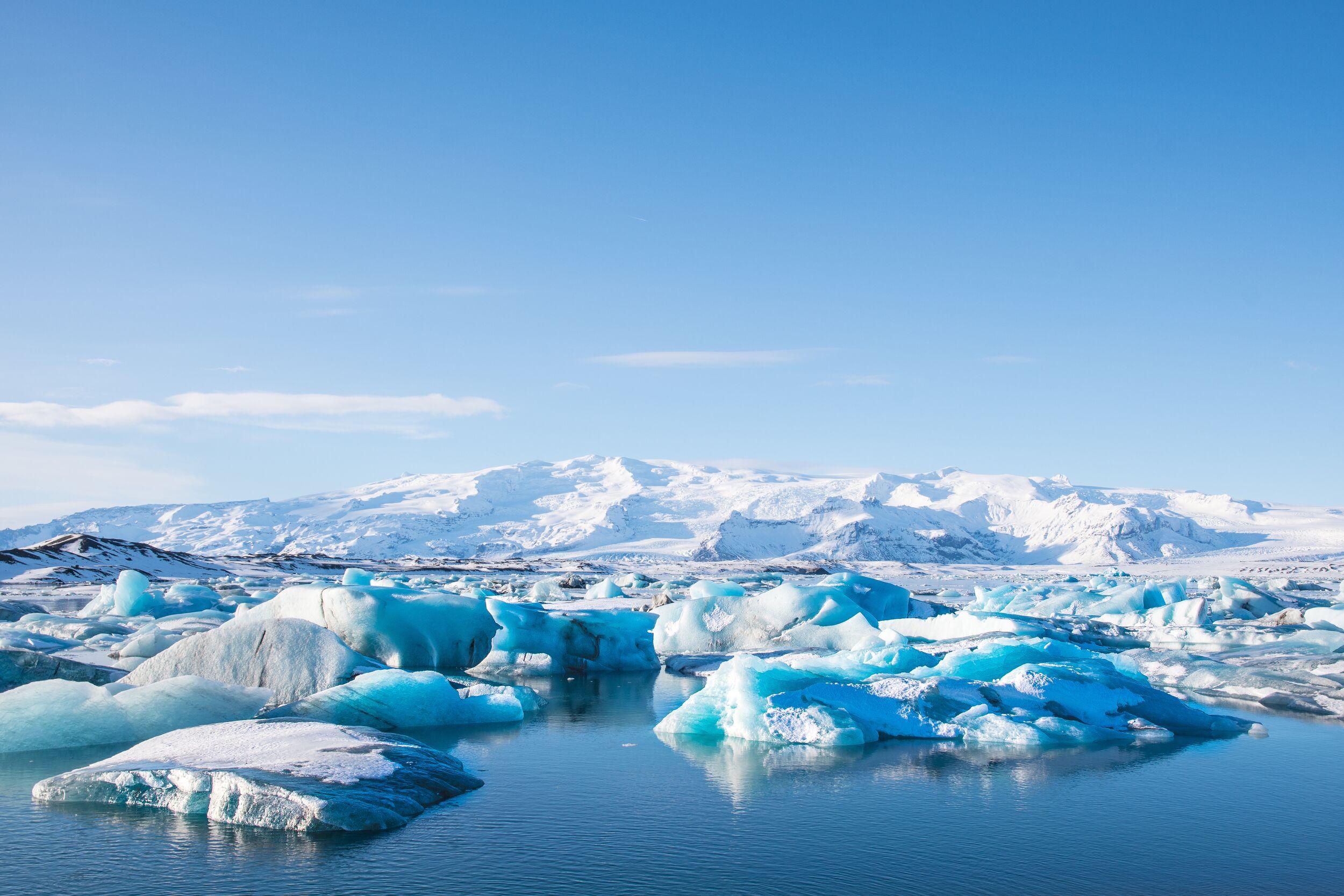
Test tour 01
The Golden Circle tour allows you to visit some of Iceland’s most stunning sights and a visit to the idyllic Friðheimar greenhouse cultivation centre.

- Multiday Tour
Iceland On a Budget - 7 days
Explore Iceland’s breathtaking landscapes, geothermal hot springs, and volcanic wonders on this 7-day (6 nights) Iceland on a Budget package. See the geysers and waterfalls of the Golden Circle, marvel at the black sand beaches of the South Coast, and discover Reykjavík’s cultural landmarks with a Hop-On Hop-Off city pass. Relax in the serene geothermal pools of Hvammsvík and step inside a real lava tunnel, where you’ll walk through Iceland’s volcanic history. With affordable travel, carbon-neutral transfers, and expert local guides, this package provides a budget-friendly way to experience Iceland’s best sights.
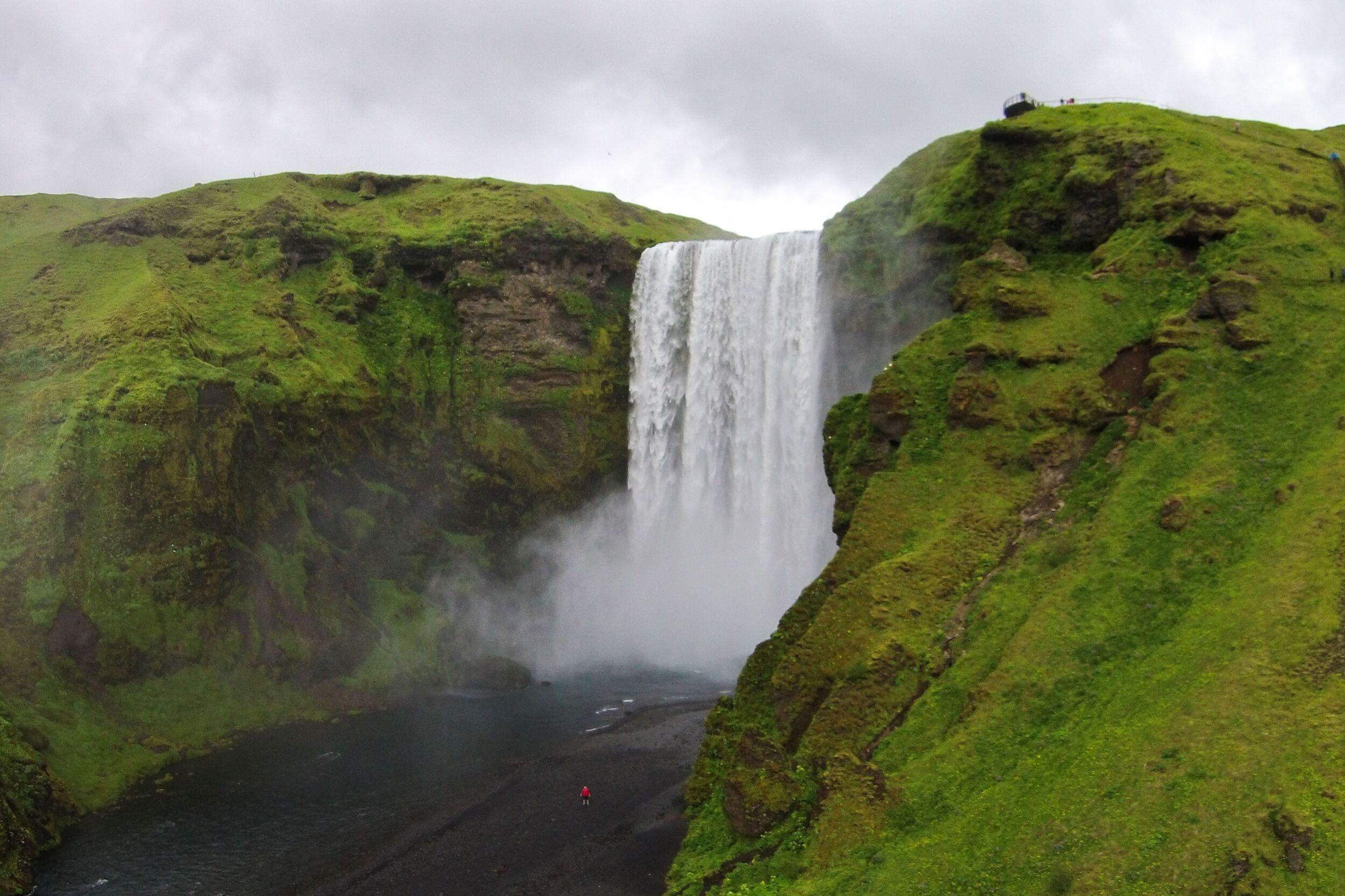
Highland Bus - Reykjavík to Skógar
In the summer, Skógar comes alive, turning into a lush green wonderland under the towering Eyjafjöll mountains. The area is home to one of Iceland’s most famous waterfalls, Skógafoss, a pearl of the south coast. The drive to Skógar is a scenic ride through the picturesque south of Iceland, passing by small farms and charming villages with astounding views of the surrounding mountains and volcanoes on clear days. Whether you are planning a day trip to the region or a multi-day hike, leave the driving to us!
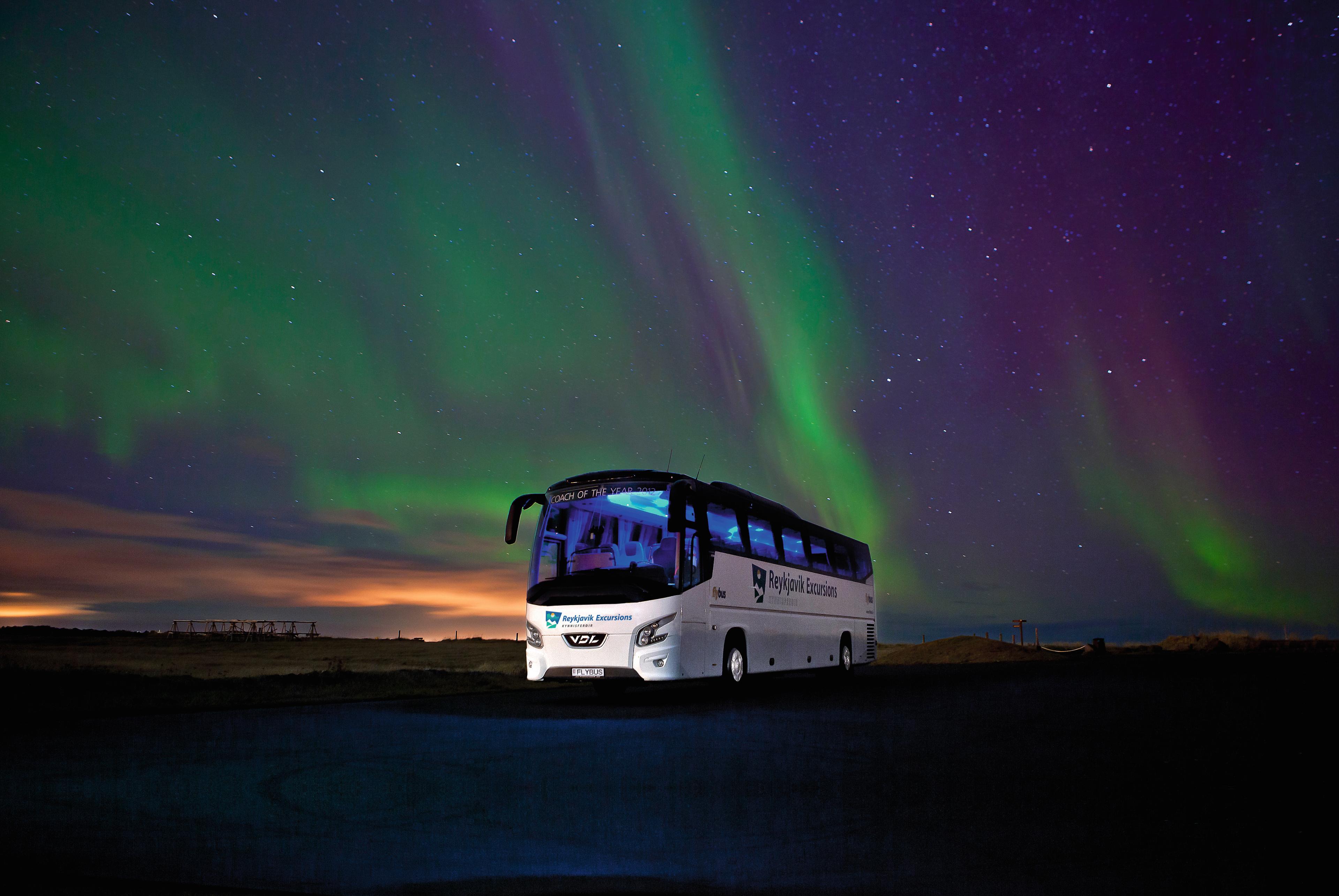
Northern Lights Tour
See the majestic Northern Lights dancing across the sky. If the skies are shy, try again free of charge as many times as you need until you see them! Learn about the phenomenon by visiting the Aurora Centre - Northern Lights Exhibition in Reykjavík; admission is included in this tour!


